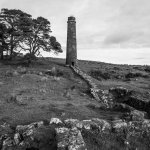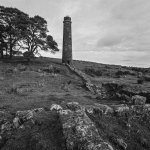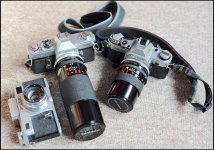antonroland
Inspector Gadget
- Messages
- 4,210
- Name
- Anton
- Edit My Images
- Yes
Hello All
OK, so size of negative and related grain and all the basic principles aside, I would love to hear some of your thoughts on the limitations of 35mm film, subjective or otherwise.
I recently reconnected with an old acquaintance who does really high quality film scanning.
He turns a 35mm frame into a 70-80Mp file and calls that a “medium scan”
This definitely opens new possibilities BUT demands the best possible technique.
Any thoughts highly appreciated.
OK, so size of negative and related grain and all the basic principles aside, I would love to hear some of your thoughts on the limitations of 35mm film, subjective or otherwise.
I recently reconnected with an old acquaintance who does really high quality film scanning.
He turns a 35mm frame into a 70-80Mp file and calls that a “medium scan”
This definitely opens new possibilities BUT demands the best possible technique.
Any thoughts highly appreciated.






